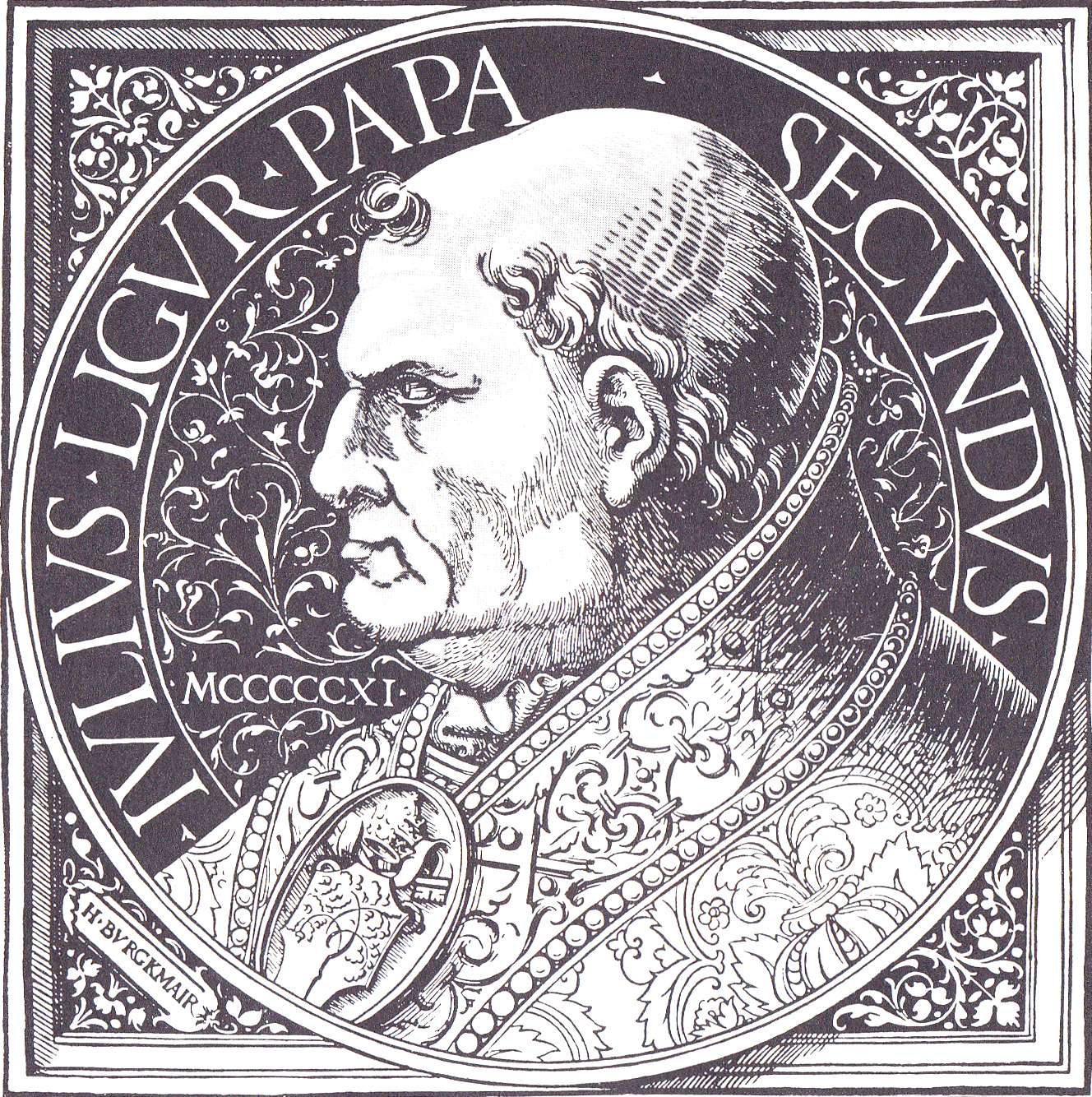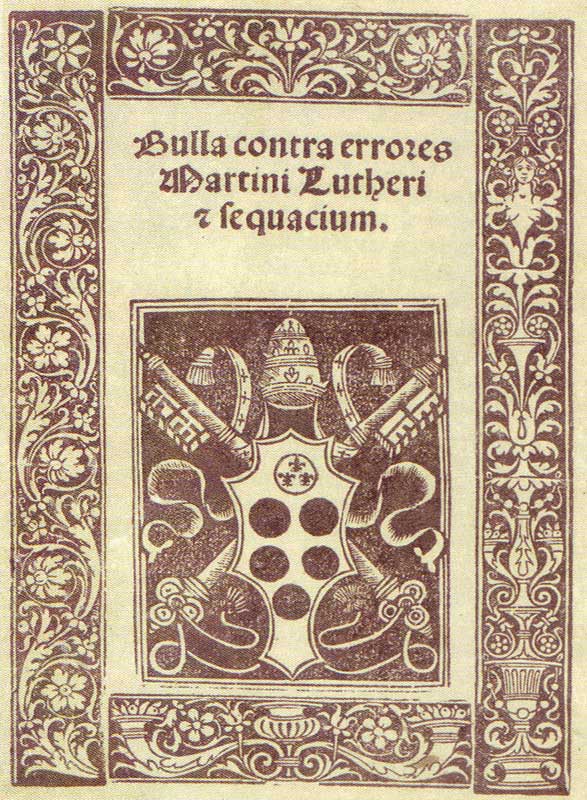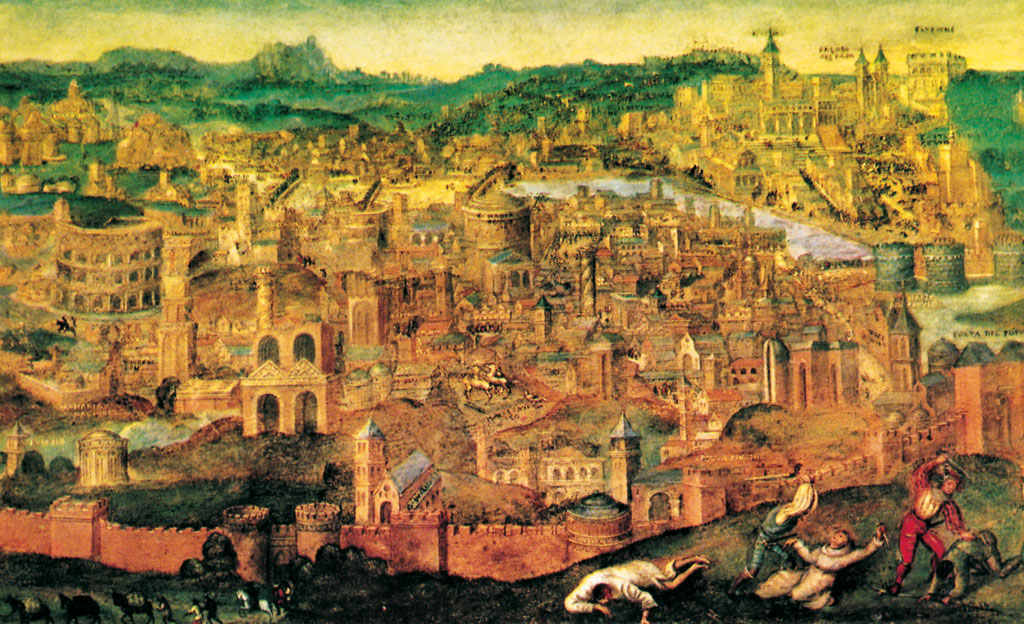|
Oratory Of Divine Love
The Oratory of Divine Love was an Italian Catholic ecclesiastical reform movement that originated in Genoa at the end of the 15th century. The notary, Ettore Vernazza (father of the mystic nun, Battistina Vernazza), played a key role in its formation - along with three other Genoese citizens, Giovanni Battista Salvago, Nicolo Grimaldi, and Benedetto Lomellino, and with the advice and inspiration of Catherine of Genoa (Caterina Fieschi Adorno). Bernardino da Feltre had founded the Oratory of San Girolamo in the Italian city of Vicenza in 1494. In 1497 Vernazza established the Society of the Handkerchief (Compagnia del Mandiletto), a grouping whose purpose was to gather alms for the poor, and which was to overtake Vicenza in significance. In 1499 he founded a hospital for incurables (''Societas reductus incurabilium''), the first of its kind in Italy. It was approved by the Genoese Senate on 27 November 1500, and privileged by Popes Julius II and Leo X. The Oratory in Rome was es ... [...More Info...] [...Related Items...] OR: [Wikipedia] [Google] [Baidu] |
Genoa
Genoa ( ; ; ) is a city in and the capital of the Italian region of Liguria, and the sixth-largest city in Italy. As of 2025, 563,947 people live within the city's administrative limits. While its metropolitan city has 818,651 inhabitants, more than 1.5 million people live in the wider metropolitan area stretching along the Italian Riviera. On the Gulf of Genoa in the Ligurian Sea, Genoa has historically been one of the most important ports on the Mediterranean: it is the busiest city in Italy and in the Mediterranean Sea and twelfth-busiest in the European Union. Genoa was the capital of one of the most powerful maritime republics for over seven centuries, from the 11th century to 1797. Particularly from the 12th century to the 15th century, the city played a leading role in the history of commerce and trade in Europe, becoming one of the largest naval powers of the continent and considered among the wealthiest cities in the world. It was also nicknamed ''la S ... [...More Info...] [...Related Items...] OR: [Wikipedia] [Google] [Baidu] |
Battistina Vernazza
Battistina Vernazza (secular name Tommasina Vernazza) (born at Genoa, 1497; died there, 1587) was an Italian canoness regular and mystical writer. Life Her father, Ettore Vernazza, was a patrician, founder of several hospitals for the sick poor in Genoa, Rome, and Naples. Her godmother was Catherine Fieschi-Adorno, known as Catherine of Genoa. At the early age of 13, Tommasina entered the monastery A monastery is a building or complex of buildings comprising the domestic quarters and workplaces of Monasticism, monastics, monks or nuns, whether living in Cenobitic monasticism, communities or alone (hermits). A monastery generally includes a ... of Santa Maria delle Grazie, and became a canoness regular, taking the name of Battistina. She filled at various times the office of treasurer, novice-mistress, and prioress. Works She wrote, among other things, a commentary on the Pater Noster; "The Union of the soul with God"; "Of the knowledge of God"; "Of prayer"; "Of the heavenl ... [...More Info...] [...Related Items...] OR: [Wikipedia] [Google] [Baidu] |
Catherine Of Genoa
Catherine of Genoa (Caterina Fieschi Adorno, 1447 – 15 September 1510) was an Italian Catholic saint and mystic, admired for her work among the sick and the poor and remembered because of various writings describing both these actions and her Christian mysticism, mystical experiences. She was a member of the noble Fieschi family,Oxford Dictionary of the Christian Church (Oxford University Press 2005 ), article ''Catherine, St, of Genoa'' and spent most of her life and her means serving the sick, especially during the bubonic plague, plague which ravaged Genoa in 1497 and 1501. She died in that city in 1510. Her fame outside her native city is connected with the publication in 1551 of the book known in English as the ''Life and Doctrine of Saint Catherine of Genoa''. Catherine and her teaching were the subject of Baron Friedrich von Hügel's classic work ''The Mystical Element of Religion'' (1908). Early life Catherine was born in Genoa in 1447, the last of five childre ... [...More Info...] [...Related Items...] OR: [Wikipedia] [Google] [Baidu] |
Bernardino Da Feltre
Bernardine of Feltre (sometimes Bernardinus of Feltre) was a Friar Minor and missionary, b. at Feltre, Italy, in 1439 and d. at Pavia, 28 September 1494. He is remembered in connection with the monti di pietà of which he was the reorganizer and, in a certain sense, the founder, together with the Michele Carcano. The feast of Blessed Bernardino is kept in the Order of Friars Minor on 28 September. He was beatified by Pope Innocent X on 13 April 1654 via the confirmation of his cult. The cause for his sainthood was opened on 7 April 1870. Life Born Martin Tomitani, he belonged to the noble family of Tomitano and was the eldest of nine children. In 1456, while a law student in Padua, he heard James of the Marches preach the Lenten course and was inspired to enter the Franciscan order, taking the name Bernardino, after Bernardino of Siena. In May that year he joined the "Observantine" Franciscans, an austere branch of the Franciscan friars. He completed successfully his studies a ... [...More Info...] [...Related Items...] OR: [Wikipedia] [Google] [Baidu] |
Vicenza
Vicenza ( , ; or , archaically ) is a city in northeastern Italy. It is in the Veneto region, at the northern base of the Monte Berico, where it straddles the Bacchiglione, River Bacchiglione. Vicenza is approximately west of Venice and east of Milan. Vicenza is a thriving and cosmopolitan city, with a rich history and culture, and many museums, art galleries, piazzas, villas, churches and elegant Renaissance ''Palazzo, palazzi''. With the Palladian villas of the Veneto in the surrounding area, and his renowned Teatro Olimpico ("Olympic Theater"), the "city of Palladio" has been listed as a UNESCO World Heritage Site since 1994. Vicenza had an estimated population of 115,927 and a metropolitan area of 270,000 in 2008. Vicenza is the third-largest Italian industrial centre as measured by the value of its exports, and is one of the country's wealthiest cities, in large part due to its textile and steel industries, which employ tens of thousands of people. Additionally, abou ... [...More Info...] [...Related Items...] OR: [Wikipedia] [Google] [Baidu] |
Julius II
Pope Julius II (; ; born Giuliano della Rovere; 5 December 144321 February 1513) was head of the Catholic Church and ruler of the Papal States from 1503 to his death, in February 1513. Nicknamed the Warrior Pope, the Battle Pope or the Fearsome Pope, it is often speculated that he had chosen his papal name not in honor of Pope Julius I but in emulation of Julius Caesar. One of the most powerful and influential popes, Julius II was a central figure of the High Renaissance and left a significant cultural and political legacy. As a result of his policies during the Italian Wars, the Papal States increased their power and centralization, and the office of the papacy continued to be crucial, diplomatically and politically, during the entirety of the 16th century in Italy and Europe. In 1506, Julius II established the Vatican Museums and initiated the rebuilding of the St. Peter's Basilica. The same year he organized the famous Swiss Guard for his personal protection and commanded a su ... [...More Info...] [...Related Items...] OR: [Wikipedia] [Google] [Baidu] |
Leo X
Pope Leo X (; born Giovanni di Lorenzo de' Medici, 11 December 14751 December 1521) was head of the Catholic Church and ruler of the Papal States from 9 March 1513 to his death in December 1521. Born into the prominent political and banking Medici family of Florence, Giovanni was the second son of Lorenzo de' Medici, ruler of the Florentine Republic, and was elevated to the cardinalate in 1489. Following the death of Pope Julius II, Giovanni was elected pope after securing the backing of the younger members of the College of Cardinals. Early on in his rule he oversaw the closing sessions of the Fifth Council of the Lateran, but struggled to implement the reforms agreed. In 1517 he led a costly war that succeeded in securing his nephew Lorenzo di Piero de' Medici as Duke of Urbino, but reduced papal finances. In Protestant circles, Leo is associated with granting indulgences for those who donated to reconstruct St. Peter's Basilica, a practice that was soon challenged by ... [...More Info...] [...Related Items...] OR: [Wikipedia] [Google] [Baidu] |
Trastevere
Trastevere () is the 13th of Rome, Italy. It is identified by the initials R. XIII and it is located within Municipio I. Its name comes from Latin (). Its coat of arms depicts a golden head of a lion on a red background, the meaning of which is uncertain. History In Rome's Roman Kingdom, Regal period (753–509 BC), the area across the Tiber belonged to the Etruscans: the Romans named it ''Ripa Etrusca'' (Etruscan bank). Rome conquered it to gain control of and access to the river from both banks, but was not interested in building on that side of the river. In fact, the only connection between Trastevere and the rest of the city was a small wooden bridge called the ''Pons Sublicius'' (English: 'bridge on wooden piles'). By the time of the Roman Republic, Republic BC, the number of sailors and fishermen making a living from the river had increased, and many had taken up residence in Trastevere. Immigrants from the East also settled there, mainly Jews and Demographics of Sy ... [...More Info...] [...Related Items...] OR: [Wikipedia] [Google] [Baidu] |
Santa Dorotea
Santa Dorotea is an ancient Catholic church in the Diocese of Rome served by the Conventual Franciscan friars. It was first attested to in a papal bull of Pope Callistus II in 1123, being referred to under its first dedication of ''San Silvestro alla Porta Settimiana''. History In 1445, it was recorded under the double dedication of ''SS Silvestro e Dorotea'', the latter, Dorothea of Caesarea, being an obscure martyr of Caesarea in Cappadocia (modern Kayseri, Turkey) who might have been killed in the early 4th century if she existed at all. In 1475 the church was rebuilt and given full parochial status, and the relics of St Dorothy were enshrined here by Giuliano De Datis, the parish priest, in 1500. In 1517, St Cajetan founded the Oratory of Divine Love in the sacristy. This is considered to have been a major event in the beginnings of the Catholic Counter-Reformation. In 1566, the church was re-listed under the present dedication and the first free public school in Europe wa ... [...More Info...] [...Related Items...] OR: [Wikipedia] [Google] [Baidu] |
Pope Leo X
Pope Leo X (; born Giovanni di Lorenzo de' Medici, 11 December 14751 December 1521) was head of the Catholic Church and ruler of the Papal States from 9 March 1513 to his death in December 1521. Born into the prominent political and banking Medici family of Florence, Giovanni was the second son of Lorenzo de' Medici, ruler of the Florentine Republic, and was elevated to the cardinalate in 1489. Following the death of Pope Julius II, Giovanni was elected pope after securing the backing of the younger members of the College of Cardinals. Early on in his rule he oversaw the closing sessions of the Fifth Council of the Lateran, but struggled to implement the reforms agreed. In 1517 he led a costly war that succeeded in securing his nephew Lorenzo di Piero de' Medici as Duke of Urbino, but reduced papal finances. In Protestant circles, Leo is associated with granting indulgences for those who donated to reconstruct St. Peter's Basilica, a practice that was soon challenged by M ... [...More Info...] [...Related Items...] OR: [Wikipedia] [Google] [Baidu] |
Holy Communion
The Eucharist ( ; from , ), also called Holy Communion, the Blessed Sacrament or the Lord's Supper, is a Christian rite, considered a sacrament in most churches and an ordinance in others. Christians believe that the rite was instituted by Jesus at the Last Supper, the night before his crucifixion, giving his disciples bread and wine. Passages in the New Testament state that he commanded them to "do this in memory of me" while referring to the bread as "my body" and the cup of wine as "the blood of my covenant, which is poured out for many". According to the synoptic Gospels, this was at a Passover meal. The elements of the Eucharist, sacramental bread, either leavened or unleavened, and sacramental wine (non-alcoholic grape juice in some Protestant traditions, such as Methodism), are consecrated on an altar or a communion table and consumed thereafter. The consecrated elements are the end product of the Eucharistic Prayer. Christians generally recognize a special presen ... [...More Info...] [...Related Items...] OR: [Wikipedia] [Google] [Baidu] |
Sack Of Rome (1527)
The Sack of Rome, then part of the Papal States, followed the capture of Rome on 6 May 1527 by the mutiny, mutinous troops of Charles V, Holy Roman Emperor, during the War of the League of Cognac. Charles V only intended to threaten military action to make Pope Clement VII come to his terms. However, most of the Imperial Army (Holy Roman Empire), Imperial army (14,000 Germans, including Lutherans, 6,000 Spaniards and some Italians, Italians) were largely unpaid. Despite being ordered not to storm Rome, they broke into the scarcely defended city and began looting, killing, and holding citizens for ransom without any restraint. Clement VII took refuge in Castel Sant'Angelo after the Swiss Guard were annihilated in a delaying rear guard action; he remained there until a ransom was paid to the pillagers. Benvenuto Cellini, eyewitness to the events, described the sack in his works. It was not until February 1528 that the spread of a plague and the approach of the League forces unde ... [...More Info...] [...Related Items...] OR: [Wikipedia] [Google] [Baidu] |






